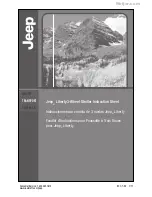
30
4
Radio planning
Carrying out effective radio planning involves a lot of work and can be very time-consuming. The
controller assists to the best of its ability by adjusting the channel and power according to the
prevailing conditions, but for a good result manual radio planning is essential.
Radio planning consists of surveying the radio frequency signal from given positions in order to
determine the optimal location of the access points. Radio planning can be based on one of two
criteria:
•
Optimal capacity and coverage of the wireless network, i.e. as many access points as possible.
•
Covering the required area using the smallest possible number of access points.
A third option may be to build the infrastructure to optimally detect the location of clients, but this is
considered of secondary importance in this document.
Radio planning should be carried out for both 2.4 GHz and 5 GHz. Since 5 GHz usually has a shorter
range than 2.4 GHz at the same effective re-adiated power, this should be taken into account if one is
planning to use as few access points as possible. If one is to use as many access points as possible,
one will in practice reduce the power output at 2.4 GHz so that 5 GHz will have at least as large a
range. This therefore ceases to be a problem and one may not need to make measurements for both
wavebands.
To carry out effective radio planning it is important to have the best possible knowledge of the
structure of the building. One must also have access to most of the building in order to carry out the
measurements. This means that measurements in some locations must take place outside of normal
working hours, when rooms and auditoriums are vacant. If the properties of the building are broadly
the same in several locations, it may be possible to get by with fewer measurements by copying the
results from those locations. Otherwise one should preferably make measurements at all potential
locations.
Simple measuring tools are:
•
A wireless client with representative radio quality, i.e. not the client with the best radio, since
this could result in problems for clients with radios of lower quality.
•
An application such as NetStumbler, which can provide continuous feedback regarding signal
strength and noise level.
•
Plan drawings of the building, preferably several copies printed on paper.
•
Felt tip markers in three colours.
•
A access point of the type to be used, in an autonomous version, since the controller is not yet
















































